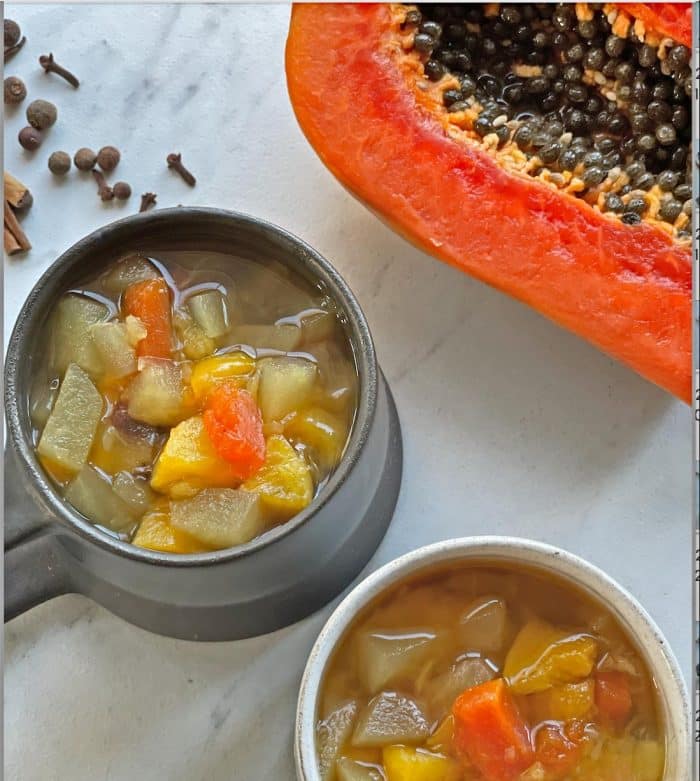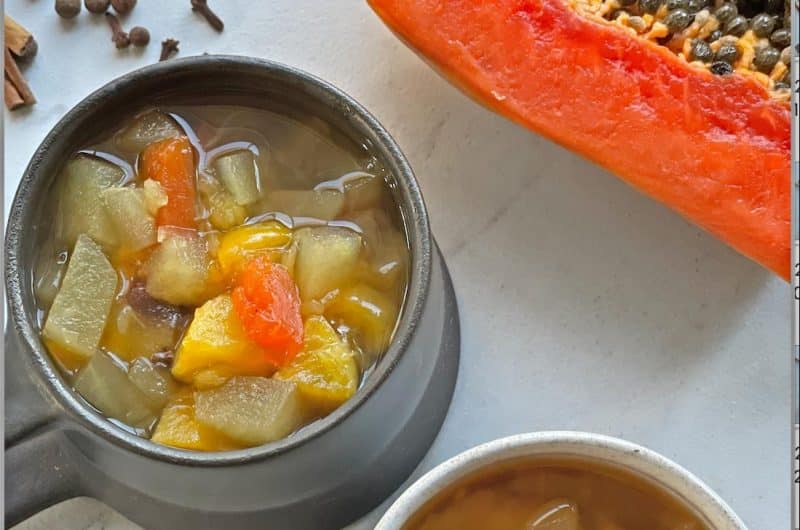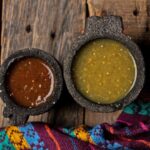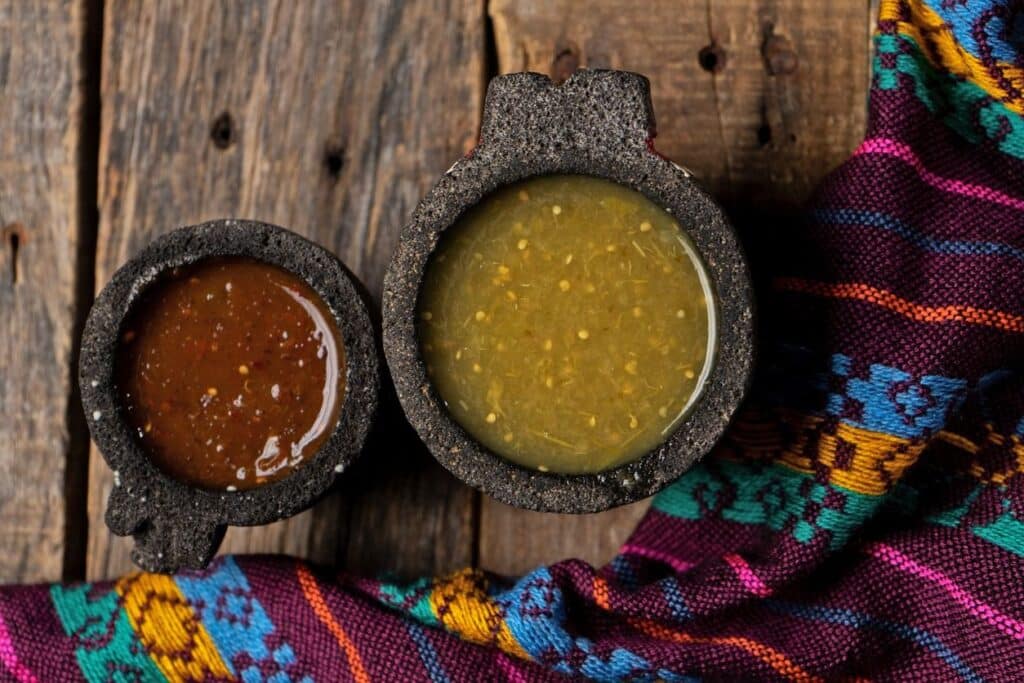Guatemalan Fruit Ponche for Gathering in Joy or Sorrow
- September 2021
- By Leny González
- Recipe from Guatemala
-
- (4)

Guatemalan fruit ponche, Full of fruit and sabor, is served at Guatemalan gatherings in both joy and sorrow. Marleny “Leny” González of Illinois has served this family recipe for fruit ponche on festive times like Christmas and birthdays. And she also made on the most somber of occasions: her mother’s funeral services, held in the Chicago area about five years ago. A very hard, sad time for their family.
In Guatemala, “they make ponche when someone dies in the family,” explains Leny. “Ponche is served during the novenario, the nine days of prayer. In our country it is traditional after the novena, you pray and you go to the house of the deceased. On the ninth day when the services and prayers for the dead person come to an end, the family serves ponche de fruta y tamales, according to tradition.”
“When my mother died, It was such a golpe fuerte—such a hard blow—for us. That whole week we had so many people over at our house, 40 or 50 persons every day and until 11 p.m. every night. It was very hard. I didn’t feel up to cooking or making ponche.
But Leny says, “I kept thinking of my mother, who had told me when we were at previous family funerals, ‘I know you are sad, but you have to raise your spirits and move ahead. That is the only way.’”
And so Leny did.
She rallied and whipped up their family recipe for paches—Guatemalan tamales made with potatoes instead of corn—and the expected ponche.
“The last day of my mother’s novena, we made ponche in a huge pot for more than 200 people,” she says. It was hard work, but it was important. Traditional food and drink sustains communities, through the good and bad. “I come from a cooking family,” Leny says. Her great grandmother, grandmother and mother sold food to train travelers in Amatlitlán in southwestern Guatemala. “Comida de casa para nosotros, para la familia, es cocinar con amor. Home cooking for us, for our family, is cooking with love.
To Spike or Not to Spike Guatemalan Fruit Ponche?
With a shot or without?
Leny remembers gatherings back home in Guatemala, when her abuela—a truly great cook, says Leny—would tease her great uncle, who was known to enjoy a drink. Would he like a glass of this traditional punch. “Quieres ponche?” her grandmother would ask .
“Con piquete!” he’d always say—and Tío would be served a nice glass of hot fruit ponche with an extra-big shot of rum or brandy.
Now, when her large family—Leny is one of six brothers and sisters, who all moved here from Guatemala—is over, Leny makes this ponche about two or three times a year. It’s a familia favorite, just like Leny’s recipe for Guatemala’s traditional borracho cake, famously rum-soaked and light as a cloud.
The family joke is that everyone asks for their ponche to be served hot and just like Tío’s: “¡Con piquete!”
Try more of Leny’s family recipes from Guatemala, including this light and delicioso traditional borracho cake and her sister Adriana’s trio of Guatemalan tostadas with red sauce, guacamole and black beans.
Ready to Make Traditional Guatemalan Fruit Ponche?
MoreLike This










Got a question or suggestion?
Please rate this recipe and leave any tips, substitutions, or Qs you have!